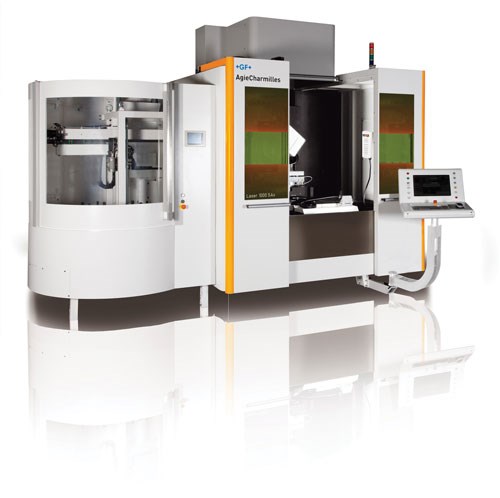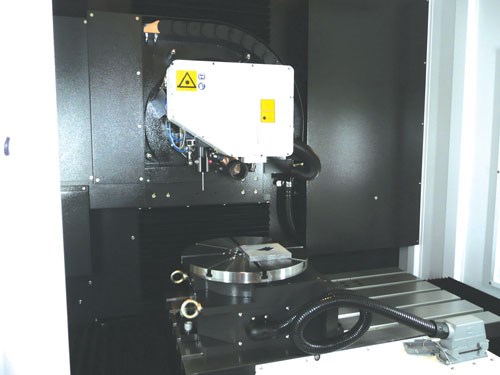Consistent Surface Texturing
A number of methods are available for surface texturing.
A number of methods are available for surface texturing. This article describes a technology that has proven effective for moldmakers and could potentially fit into other applications, as well. Shops that need texturing should consider this often overlooked option as a process that might fill the need.
Common Practice
In many industries, surface texture has become an important aspect of product design. It not only provides the means to refine the physical appearance of an item, but also allows a company to influence users’ tactile impressions of their products. Command of this subtle interaction offers the opportunity to convey to customers a subconscious, and in some instances conscious, indication of product quality. It is of no surprise that moldmakers are increasingly seeking ways to improve the level of control exerted in surface texturing.
Traditionally, one of two technologies has been employed to provide mold texturing. Moldmakers with five-axis machining capabilities may use them for creating textures in addition to general machining. This can be an acceptable alternative if the shop has five-axis capacity or only a relatively small percentage of jobs that require texturing. Otherwise, the opportunity costs quickly accumulate, as the equipment could be more productively utilized with roughing and finishing operations than with time-consuming texturing. Additionally, texturing in this manner requires very small, specialized tools, which increases the cost of the process.
Far more commonly, moldmakers turn to chemical etching. Compared with five-axis machining, this method offers substantial time and cost savings. Unfortunately, it also requires sacrifices in the areas of consistency and quality, because of the impossibility of precisely controlling the texture produced. Chemical etching also has potentially adverse environmental ramifications that are of increasing concern for many manufacturers.
Another Option
Another technology has also emerged to meet these finishing requirements in the form of laser texturing. The process entails using a laser to sublimate material, turning it directly from solid to gas. It is already used in a variety of applications, ranging from surgical procedures to production of superconductors. Laser texturing centers can be equipped with pulsed, fiber-optic lasers of varying strengths and a variety of lenses with different focal lengths to maximize productivity. The process promises several key advantages to moldmakers requiring surface texturing.
Laser texturing offers more precision and accuracy than the chemical etching process. No matter how much care is taken during etching, it is impossible to eliminate variation that results in a minimum of slight differences between workpieces. Laser texturing centers produce textures directly from digital files, allowing the creation of any number of identical components. Some manufacturers may think that variation is acceptable between components, but it becomes a much more apparent issue when thinking in terms of complex molds that require multiple inserts. In those instances, differences between the various inserts can result in a visibly inconsistent surface across the part. Laser texturing eliminates the need for this sacrifice in quality.
This process also has no environmental impact. Even for manufacturers who are unconcerned about the environmental impact of their operations, it can provide substantial benefit. Because of the nature of the chemicals used for etching, U.S. companies conducting that process must comply with a host of regulations that substantially increase its price. As an alternative, parts can be shipped to companies doing business in countries with little or no environmental regulation, but this option brings with it substantial leadtimes and low flexibility in responding to urgent needs. In short, laser texturing will often be cheaper than domestic chemical etching and faster than international chemical etching.
In addition to adherence to strict government regulations, chemical etching also requires substantial manual labor. Each part undergoing the process must be carefully prepared to ensure that the chemicals only access the features to be textured. Exposing other areas of the component to these chemicals can result in the entire piece being scrapped. Additionally, the process requires readying the chemicals, administering the bath, cleaning the part, and disposing of the chemicals—all steps with high labor components. In contrast, laser texturing consumes very little labor. An operator sets the part in the machine, loads the program and walks away until the texturing is complete. While the actual process time of laser texturing will substantially exceed that of chemical etching, the ability to run fully unmanned minimizes labor utilization. The only true operating cost of the process is the cost of the electricity consumed.
Last, laser texturing opens the door for more legal protection of innovative designs. The lack of repeatable results with chemical etching renders the process unable to create textures that could be submitted for patent protection. Laser texturing overcomes this hurdle, allowing moldmakers to create and protect surfaces that result in a truly unique appearance and feel in the final product.
With today’s high demands for product differentiation, laser texturing centers provide moldmakers with a new, unique means to meet and exceed their customers’ needs. By incorporating previously unattainable levels of quality and repeatability, a shop utilizing laser texturing can quickly stand out in the sea of competition.
Read Next
Do You Have Single Points of Failure?
Plans need to be in place before a catastrophic event occurs.
Read MoreA Tooling Workshop Worth a Visit
Marubeni Citizen-Cincom’s tooling and accessory workshop offers a chance to learn more about ancillary devices that can boost machining efficiency and capability.
Read MoreSeeing Automated Workpiece Measurement in Real Time
User-friendly inspection software for CNC machining centers was shown at IMTS 2024 monitoring measurements between and after machining while performing SPC based on recorded measurement values.
Read More




















